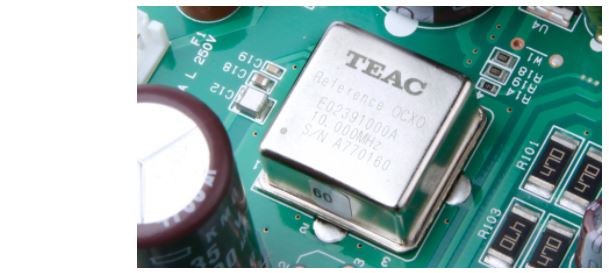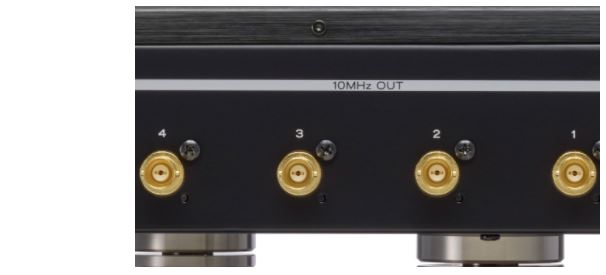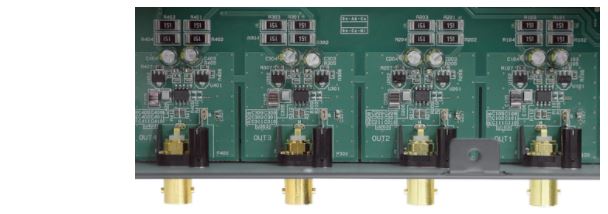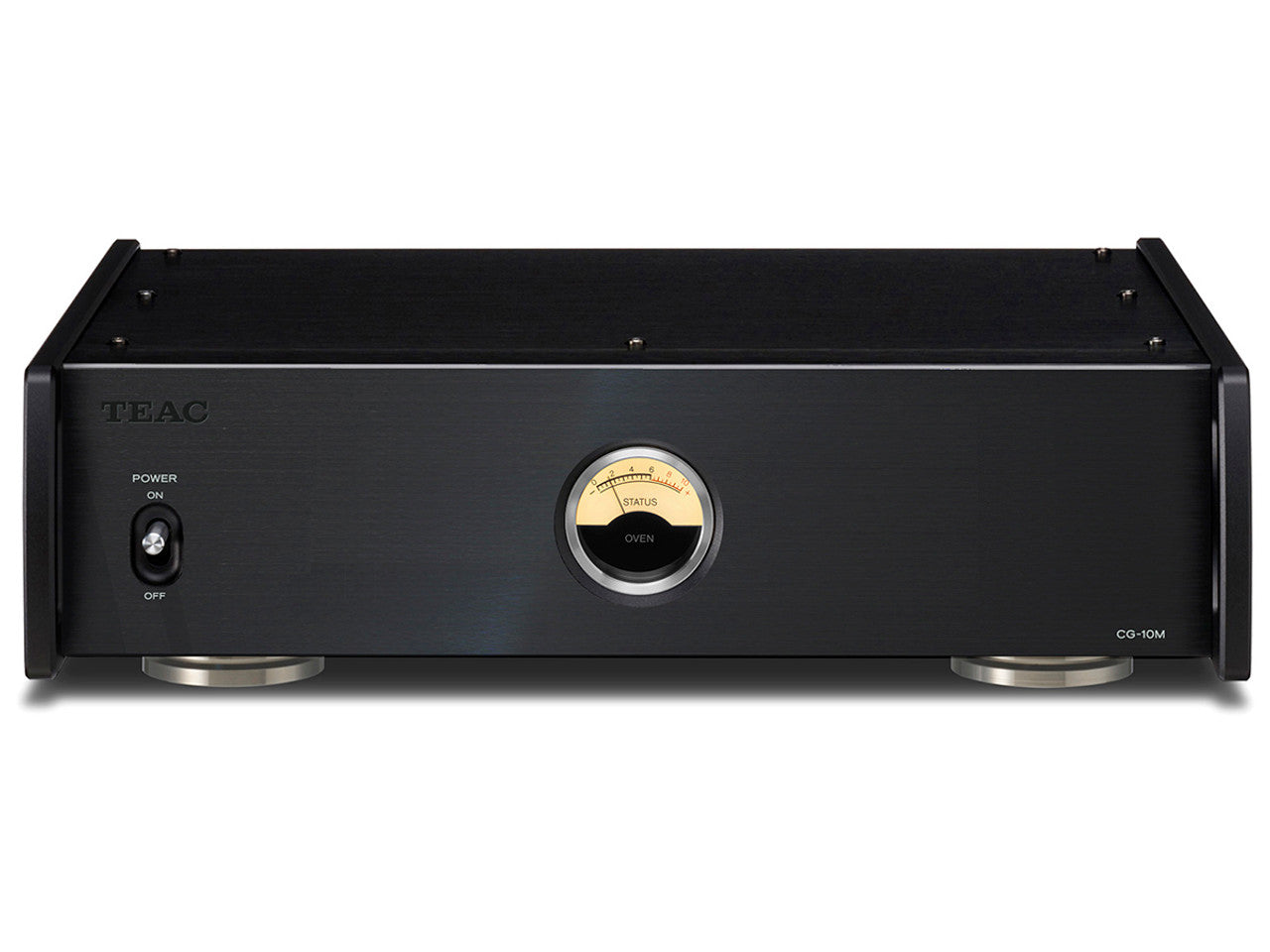Couldn't load pickup availability

Since temperature has a huge effect on accuracy of the crystal oscillator, minimising temperature changes and maintaining it at an ideal level are extremely important in order to generate an accurate clock signal. The CG-10M employs an innovative oven-controlled crystal oscillator, the TEAC Reference OCXO to reduce oscillation frequency fluctuations caused by temperature changes.
Thanks to the TEAC Reference OCXO, the CG-10M delivers an ultra high-precision 10MHz clock signal – within ±3 ppb of frequency temperature characteristics and within ±0.1 ppm of frequency precision – to USB DACs and digital players. A unique laser-engraved serial number and the TEAC Reference OCXO logo on every OCXC case is proof of the rigorous quality inspection undertaken during the manufacturing process.
ppm=10-6, ppb=10-9
Frequency temperature characteristics: A value of frequency fluctuation caused by temperature change
Frequency precision: An actual frequency range

Four gold-plated BNC connectors (50 ohms) are provided to deliver clock signals to multiple devices. Up to four devices that support a 10MHz input may be connected simultaneously, including USB DACs, network players and SA-CD players.

Each circuit in the CG-10M – from the power supply section to the buffer-amp at the output stage, – is completely isolated to prevent cross-interference when multiple devices are connected to the BNC connectors. By incorporating a buffer-amp into each circuit, no degradation of the signal waveform occurs when the generated clock signal is shared by several devices.

The OVEN STATUS analogue gauge located in the middle of the unit, a TEAC trademark in recent years, shows the stability of the crystal oscillator when in use. As the temperature of the oven that contains the crystal oscillator reaches to the ideal temperature for accurate clock generation, power consumption of the oven decreases and the gauge points to zero, signaling to the user that the digital processing on the connected device is now controlled by an extremely accurate 10MHz clock signal. The gauge is a backlit-type with a dimmer control (including the ability to completely switch the backlight off). * The oscillator is usually stable about 2 minutes after the power is turned on. However, at least 10 minutes are necessary for the clock to reach an ideal condition.

A high-capacity, toroidal-core power transformer constantly supplies a constant, stable current that contributes greatly to the efficacy of the crucial clock generation and its subsequent high-precision output.

The CG-10M employs TEAC's patented ‘Pin-Point’ feet. These ingeniously comprises two separated metal sections in a in an integrated housing. One is has a spiked top and is attached to the bottom of the chassis, the other is a basin-shaped base that hangs down from the spiked section with a flange-shaped cup to simply installation. Three ‘Pin-Point’ foot are used for support, two at the front and one at the rear, for excellent stability, even on an uneven floor. As a result, the three ‘Pin-Point’ feet help improve the accuracy of clock oscillation by minimising vibrations and resonance. This, in turn, reduces mid and low frequency muddiness, improves the soundstage and enhances fine sound detail. * Japan patent No. 4075477 and No. 3778108
